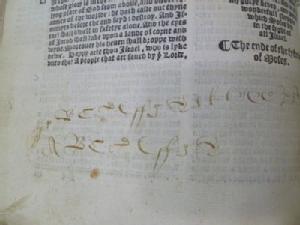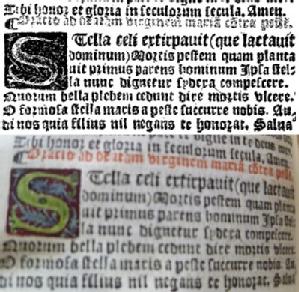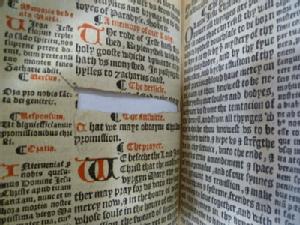Warwick / Newberry Research Fellows
Dr Stephen Bates
In July 2015 I was able to visit the Newberry Library as a Visiting Research Fellow, courtesy of a generous grant awarded through the Centre for the Study of the Renaissance. My particular area of research interest lies in late medieval and early modern piety and I therefore devoted my time to exploring the Library’s collection of printed English Bibles, manuscript Books of Hours and printed primers.
The Newberry’s earliest Bibles are an incomplete ‘Coverdale’ Bible (Case C216.535), printed in October 1535 and a ‘Matthew’ Bible, printed in the summer of 1537 (C217.537); both were printed in Antwerp. The Newberry also holds a copy of the subsequently authorised Great Bible (C218.539), printed in London in April 1539. A particularly special item in the collection is a Taverner Bible (C2175.539), rare because its publication date coincided with that of the Great Bible.
The Newberry also holds a rich collection of printed primers, the earliest dating from 1539 (Case C8672.54) and including Latin text as well as English. Of particular interest to me were the Marian primers, which at times reflect the criticisms of Erasmian humanism and Henrician reform, but often reintroduce themes from pre-Reformation piety such as the swooning Virgin at the crucifixion. The magnificent fifteenth-century Books of Hours which these primers replaced in popular material culture are well-represented too, including Case MS40.1 (c.1470) and the miniature Case MS35 (c.1455). These are of Sarum Use and would have been produced for English clients.
Handling the actual books is always a privilege, but dealing with originals rather than digital reproductions did serve to demonstrate that the latter often fail to reproduce rubric effectively. I was also particularly struck by the amount of marginalia, notation and even physical alteration to the text. In the Taverner Bible there were even doodles and the practising of letters, suggesting the over-familiarity of the family Bible supplanting a once sacred and proscribed tome.
I am now working on an article concerning the content of English primers during the reign of Mary Tudor, for which this trip has been extremely useful and stimulating. However, in helping me contrast the actual documents from the digitised images on which my own scholarship so often relies, this visit has proved to be a cautionary tale and emphasised the importance of funding in conducting really first-class research.
 Henrician primers in the Newberry’s Reading Room
Henrician primers in the Newberry’s Reading Room

Practising letters in a Taverner Bible

A prayer from a 1556 Marian primer, digitally reproduced (above) and contrasted with the original, with rubric and coloured initial (below)

The words ‘Holy mother of God make thy peticion’ excised from a Henrician primer
